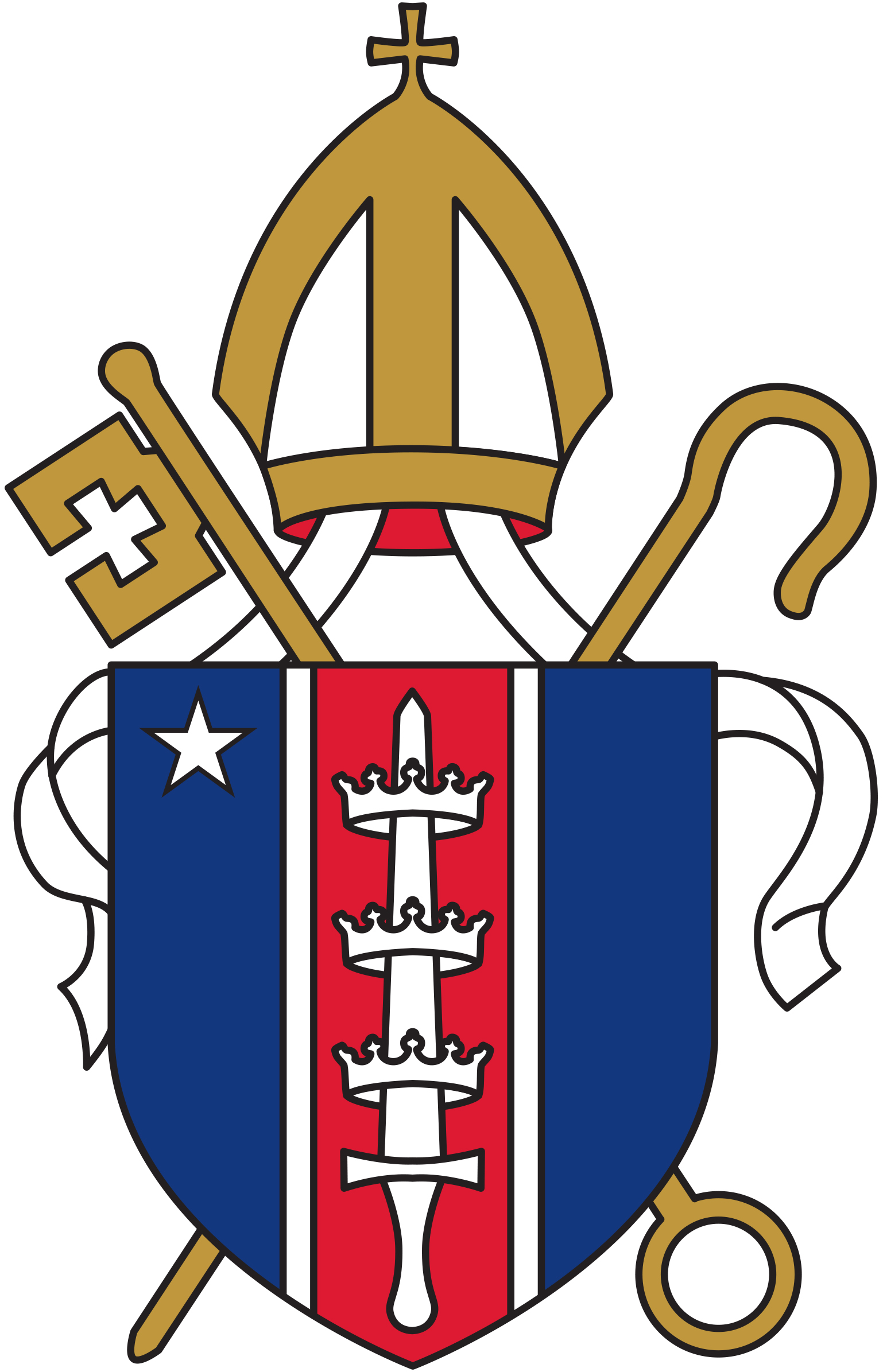Gabriel M. Colombo, a member of the Episcopal Chaplaincy at Harvard, was among those who took part in the March 7, 2024, diocesan pilgrimage to Pocasset Wampanoag land and offers this reflection on his experience.
I am standing under a dark blue umbrella in a clearing at the edge of a wood, and my whole body feels like lead. There is rain, and mud, and a waterlogged fire circle. I find myself with a heavy disquiet in my muscles, a wet cold in my bones.
As others disperse to follow soggy paths, I have neither the desire to move on this land nor a sense of its permission being given to me, so I wait beneath an oak, my boots balanced across the roll of its roots and the mosses nestled there. I don’t think the land is speaking to me in any Romantic or transformative way. It feels indifferent to me, to the stories I tell myself, to the grief I nurse. My prior experiences walking in deserts, fields and forests strike me as a little presumptuous. How do I listen to land when it whispers its mistrust?
After a time, the scattered group trickles back to the waiting buses, and I follow. I sit in silence during the half-hour return trip to the church, watching grey suburban houses and highway interchanges roll by. Whose land is your land? Whose land is “my” land?
Earlier, we glimpse the complexity and tension of the Pocasset Wampanoag’s contemporary life as several tribal leaders welcome us to the reservation, which we must access by traversing a gravel driveway running past a house. While Ellie “Spirit Eagle” Page, the tribal historian, shares remarks and stories on behalf of her husband, Chief Edward “Grey Fox” Page, a woman who we learn lives in that house begins recording video on her smartphone and interrupts, asserting that the group we’ve come to see are “squatters” and that we ought not believe “stories told by a white lady” (Ellie has light skin) before she marches away.
The episode weighs on me. It raises the specter of the ethical and spiritual minefield that I, personally, as a white man, and we, collectively, as a predominately white church with English heritage, enter any time we attempt to build “right” relationship with individuals and peoples oppressed by whiteness and by our own institution. Trying to do the “right” thing feels like trying to swim upstream in a swift, contaminated river.
When attempting to make sense of this work in its sorrow and delicacy, I often turn to writers like Anna Lowenhaupt Tsing, a Chinese American anthropologist whose book The Mushroom at the End of the World: On the Possibility of Life in Capitalist Ruins uses the example of the rare, valuable matsutake mushroom to explore the “indeterminacy and conditions of precarity, that is, life without the promise of stability” in which we find ourselves. [i] I think Tsing and her colleagues in the fields of the environmental humanities are charting a course into the dark wood of haunted entanglement that is our social-ecological reality, not trying to skirt around it.
The Pocasset Wampanoag are figuratively and literally pitching tents at the edge of this wood, the semi-permanent trailers in which some of them dwell a living protest. Perhaps in standing with these fellow travelers on the land, even for a moment, we take a small step together in a mycorrhizal hope: not the bright, leafy-green kind painted in the dubious language of “sustainability” but the ashen, rhizomatic kind of our subterranean fungal cousins, of Jesus’s sojourn in the desert and the tomb.
We don’t know exactly where we need to go. We don’t know how to get there. But we know we’re not there, and it seems the only option is to keep taking steps, even if that means standing still and quiet in the rain. In the words of the Muscogee poet Joy Harjo, we “lift [our] attention / For the appearance of the next road … It’s the ancient road the soul knows … It beckons at birth / It carries us home.” [ii]
--Gabriel M. Colombo
[i] Anna Lowenhaupt Tsing, The Mushroom at the End of the World: On the Possibility of Life in Capitalist Ruins (Princeton: Princeton University Press, 2015), 2.
[ii] Joy Harjo, “The Road,” American Sunrise (New York: Norton, 2019), 64.

